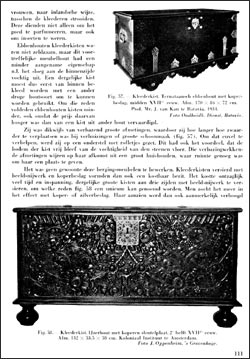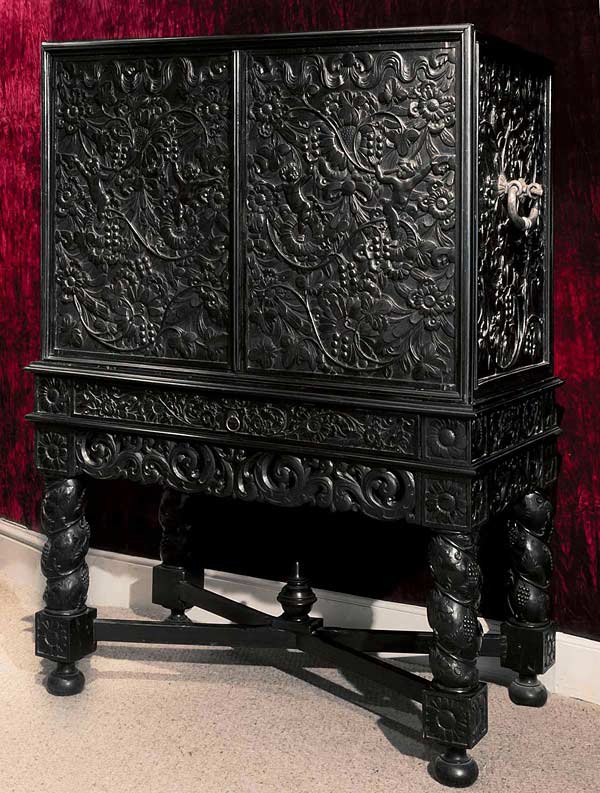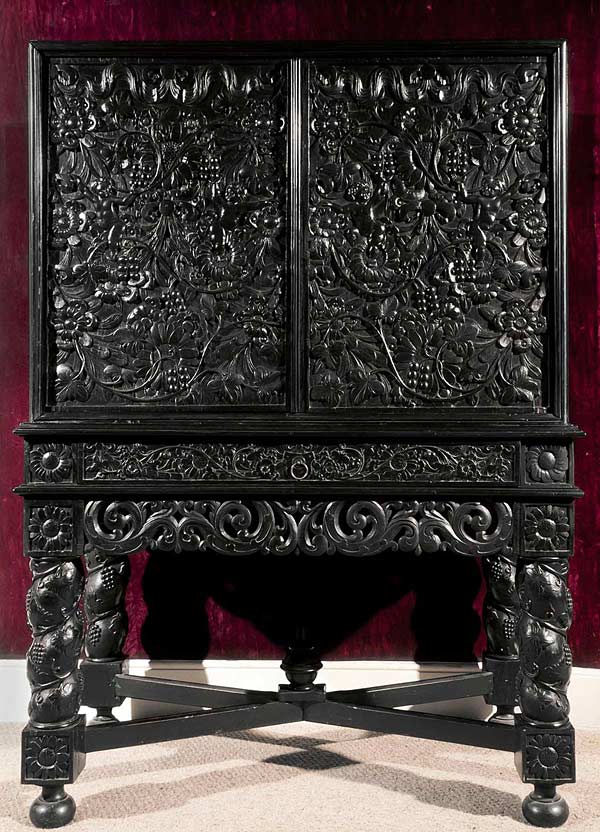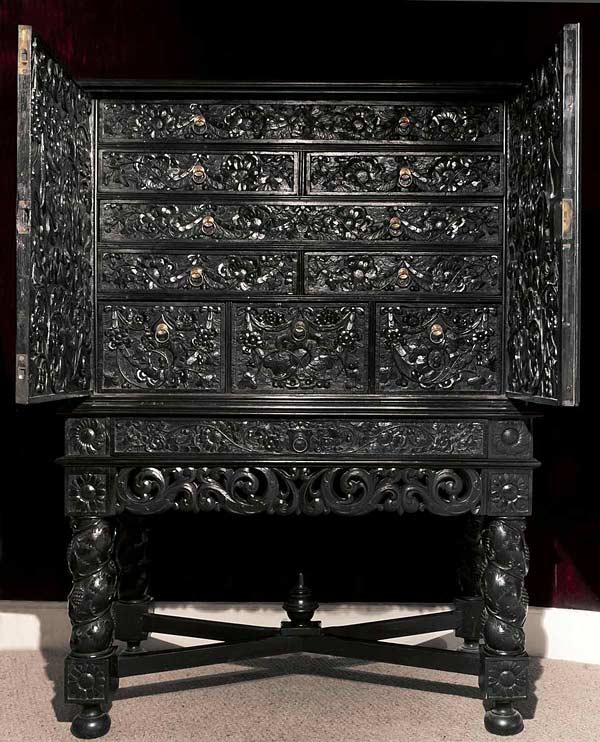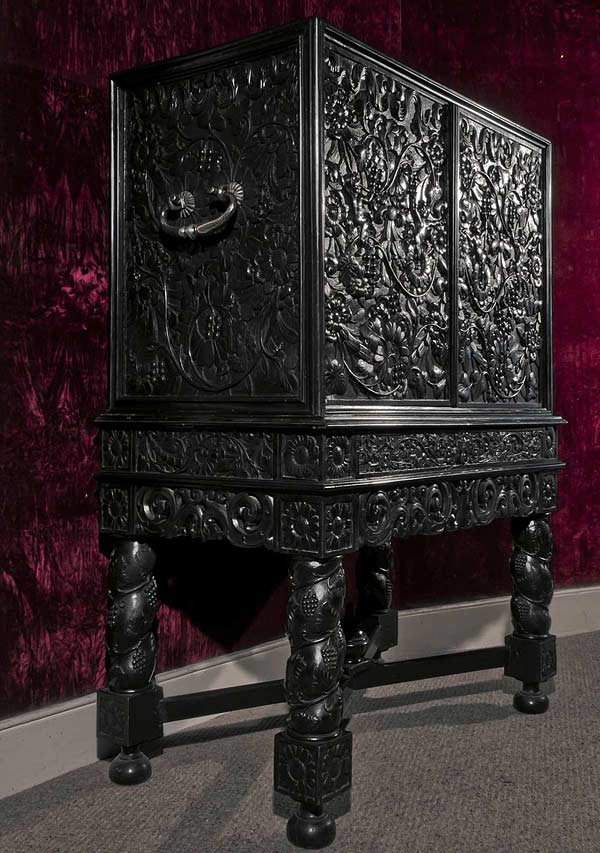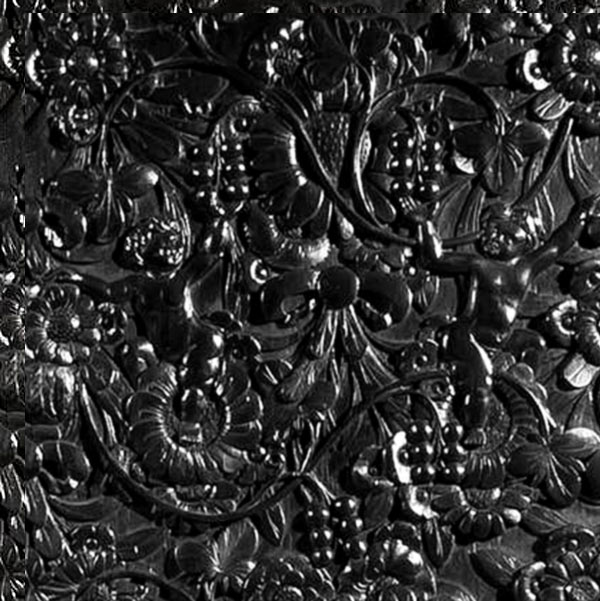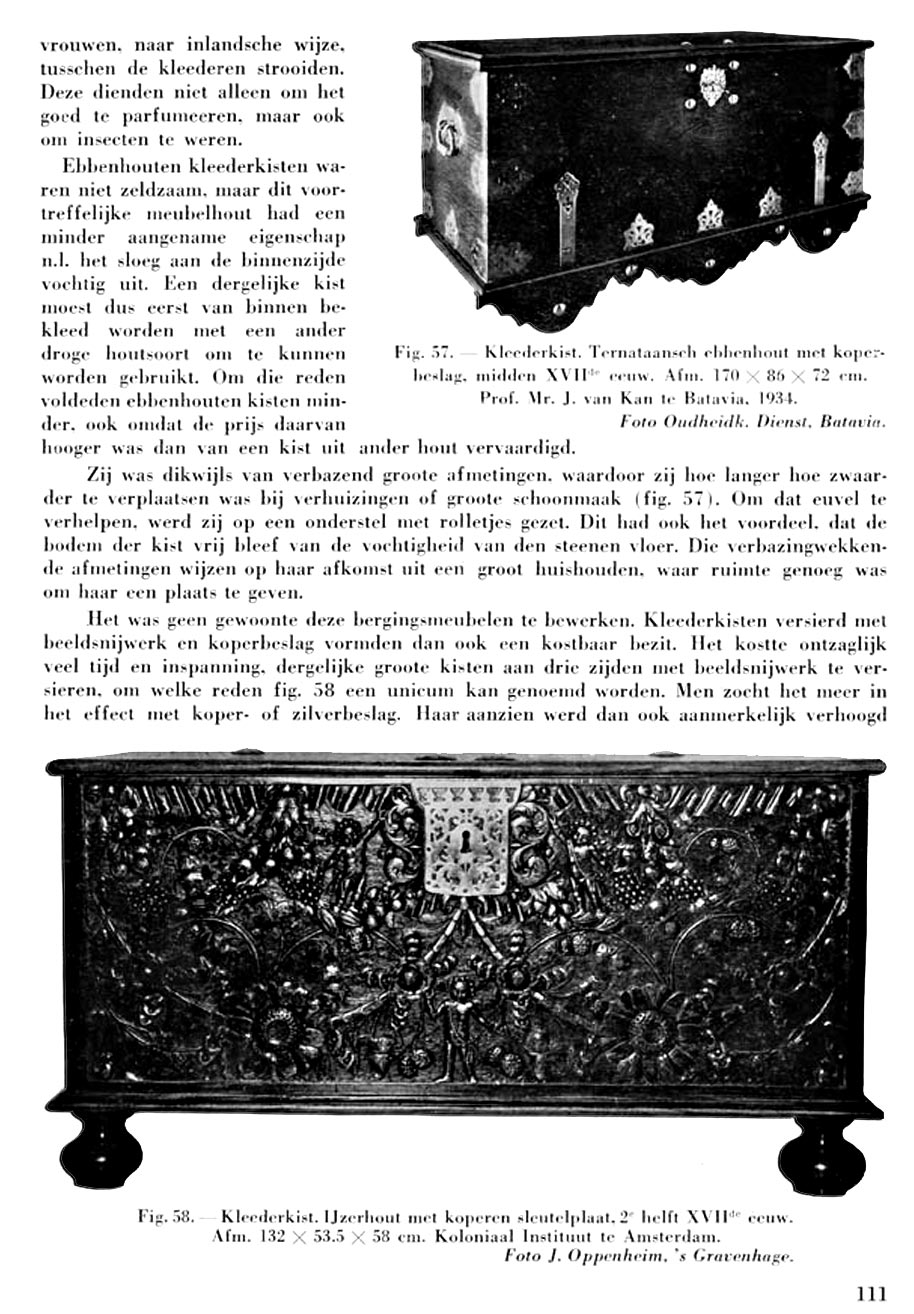Furniture
Archive IndexCabinet on a Stand
Cabinet on a Stand
Batavia
Cabinet, Circa 1650
Stand, Circa 1700
-
Cabinet: 97 x 68.5 x 53 cms
Stand: 100 x 71.5 x 56 cms
Various Hardwoods
This beautifully carved cabinet is made of several hard woods, including ebony. It is profusely carved on its sides and top; the doors are carved on both sides.
The cabinet has an arrangement of drawers on five levels. The front of these is again caved but in lower relief compared to the carving on the carcass of the cabinet.
The carving on the top of the cabinet consists of a garland of flowers under which there are spiraling botanical tendrils which weave around sunflowers.
The sides have a ribbon motif on the top under which sunflowers and berries are seen against swirling tendrils. There are heavy and substantial silver handles which are mounted on the sunflower heads; this reveals a level of sophistication seldom seen in these cabinets.
The exterior of the doors at the front are a tour de force of both design and execution. The top of each is defined by the ribbon motif continued from that on the sides. Under this is a riot of plant forms, including sun flowers and berries amidst these are two putti playing amongst the foliage. This is repeated on the other door. The interiors of the doors are unusual as they are also carved. The ribbon motif continues on the top edge and there is another ribbon in the central portion. The swirling plant motifs are seen throughout.
The fronts of the draws are carved in lower relief with the plant and sunflower motifs. The handles might be silver gilt.
The stand is of ebony and though of later date, circa 1700, has been made using the same motifs and therefore made for the cabinet.
There is a related Clothes Chest in the Tropenmuseum – Tropical Museum
Amsterdam, this is illustrated In Hollandsche Koloniale Barokmeubel by
Dr V.I.Van De Wall Chapter 6, Indoor Colonial Furniture Fig 58.
